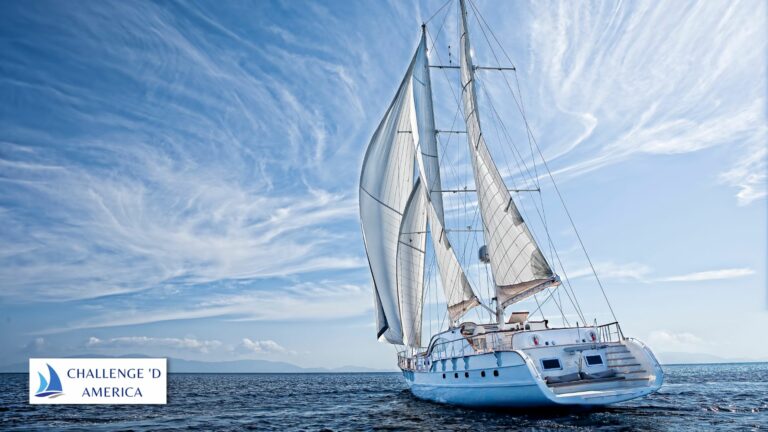What Is The Minimum Size Sailboat For Ocean?
The Minimum Size Sailboat for an Ocean Crossing
Whether you’re a budding sailor or an experienced voyager, choosing the right size sailboat for an ocean crossing is essential to ensure a safe and enjoyable experience.
It’s important to understand the different types of boats available and their associated benefits and drawbacks before making your selection, as the wrong choice could put you at risk of danger or even disaster at sea.
This article will explore what size sailboat is necessary for an ocean crossing, what factors to consider when choosing a boat, and other helpful resources for your voyage.
What Is an Ocean Crossing?
An ocean crossing is defined as sailing across any part of the world’s major oceans, such as: Atlantic, Pacific, Indian, Arctic or Southern Oceans.
It typically involves sailing over long distances and navigating through diverse conditions such as high winds, large waves, and unpredictable weather patterns – all while remaining safe and secure at sea.
As such, it is essential that any boat chosen to complete this voyage must be able to handle all these conditions and be prepared for any emergency that may arise while out on the open water.
Understanding the Necessary Boat Features
When considering what size boat is necessary for an ocean crossing it is important to understand what type of vessel will best meet your needs and be suitable for long-term voyaging in challenging sea conditions.
A good boat should have all the necessary features to help keep you safe at sea including good quality sails, reliable navigation instruments, sturdy hulls with ample storage space, comfortable living quarters with plenty of fresh air circulation, robust safety equipment and efficient fuel consumption capabilities – just to name a few!
What Size Boat Is Required?
The short answer is 27 feet – this is considered the minimum size required for an ocean crossing by experienced sailors around the world due to its ability to handle challenging sea conditions while offering a comfortable living space aboard such as sleeping areas and cooking facilities.
However, there are many factors to consider when choosing a boat such as vessel weight/displacement ratio which can determine how well it can handle strong winds and large waves, its type of hull design (monohull/catamaran), its draft profile, its overall length, its internal volume, its material construction, its capacity for fuel storage, etc., so it’s important that you do your research before making your selection!
Benefits Of a Smaller Sailing Vessel
Choosing a smaller sailboat can offer many advantages compared with larger vessels: they require less fuel consumption due to their smaller engines, they are more maneuverable in tight spaces, they are easier to handle in inclement weather conditions, they require less maintenance than larger vessels, they are cheaper to purchase than larger vessels, etc., so if you’re on a budget then this could be an ideal choice!
Drawbacks of a Smaller Sailing Vessel
While there are several benefits associated with smaller sailing vessels, it’s important not to overlook potential drawbacks too: they are more susceptible to windage which can make them slower than larger vessels when sailing in strong winds or large waves, they typically have limited cargo capacity due to their small size which could cause problems if you plan on taking long trips with lots of supplies aboard, they may not be suitable for colder climates due to limited insulation capabilities within their hulls, etc., so it’s important that you consider all factors before making your selection!
Factors To Consider When Choosing A Boat For An Ocean Crossing
When selecting what size sailboat is necessary for an ocean crossing it’s important that you take into consideration all factors including: vessel weight/displacement ratio which will determine how well it can handle strong winds and large waves, type of hull design (monohull/catamaran), draft profile which affects how efficient it is in terms of fuel consumption/speed capabilities, overall length (27 feet being minimum), internal volume which affects living space/storage capabilities aboard, material construction which impacts overall durability/safety measures etc., so make sure you weigh up all options carefully before making your decision!
Knowing The Risks
It’s also important that you recognize the risks associated with sailing on open water: strong winds can cause instability onboard if not correctly managed through proper reefing techniques (reducing sail area), choppy seas can cause increased motion sickness potential if not managed properly onboard with appropriate anti-seasickness medication/techniques etc., so understanding these risks should also be taken into account when selecting your vessel size before embarking on an ocean crossing!
Conclusion
Choosing what size sailboat is necessary for an ocean crossing requires careful consideration as there are several factors involved including vessel weight/displacement ratio, type of hull design (monohull/catamaran), draft profile, overall length (27 feet being minimum), internal volume, material construction etc., so make sure that you take into account all these considerations before selecting your vessel size!
Additionally remember that there are some risks involved in sailing on open water including increased motion sickness potential caused by choppy seas and instability caused by strong winds so make sure that you are prepared adequately before setting off on your voyage!
Frequently Asked Questions (FAQs)
What is the minimum size sailboat required for an ocean crossing?
The minimum size required for an ocean crossing by experienced sailors around the world is 27 feet due its ability to handle challenging sea conditions while offering enough living space aboard such as sleeping areas and cooking facilities.
What factors should I consider when selecting my boat?
You should consider several factors when selecting your boat including vessel weight/displacement ratio which will determine how well it can handle strong winds and large waves, type of hull design (monohull/catamaran), draft profile which affects how efficient it is in terms of fuel consumption/speed capabilities, overall length (27 feet being minimum), internal volume which affects living space/storage capabilities aboard etc., so make sure you research each factor carefully before making your decision!
Are there any risks associated with sailing on open water?
Yes there are some risks associated with sailing on open water including increased motion sickness potential caused by choppy seas and instability caused by strong winds so make sure that you take proper precautions before setting off on your voyage!







